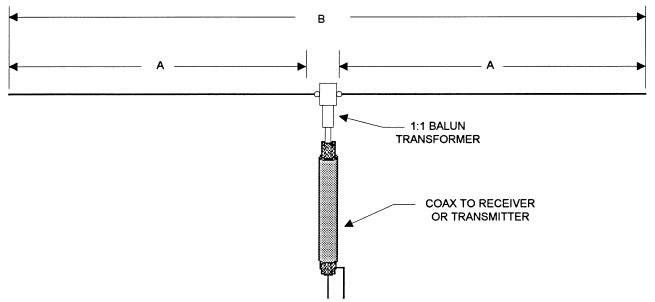You know those memes on social media that say something like “If you can remember (this thing) you’re officially old?” Well if you remember putting aluminum foil on the ends of your antennas, you’re officially old. Back in the 20th century, putting tin foil on the end of an antenna was believed to improve reception. Some people got really into it, too, with different aiming styles and everything. Sometimes it seemed like a bit of a cult, the people who put foil on their antennas.
Here’s the thing though: the results could be questionable, and for most people it didn’t work very well. Today’s antennas are more sophisticated so you could actually be hurting your chances of a strong signal by doing this.
Let’s back up a little and explain why this might have worked.
A lot of people think of an antenna like a net, or like flypaper. The bigger it is, the more likely you’ll receive something. That’s sort of true, but mostly not. Antennas actually need to be a specific length in order to receiver specific signals. Generally this is a fraction of the actual wavelength of the signal. It’s common to use 1/4 of the wavelength because it’s a fairly manageable number. Antennas also need to be parallel to the signals they’re receiving, meaning that the best placement for “rabbit ears” isn’t the typical “V”, it’s flat like this:

When you adjust a “rabbit ears” type antenna what you are really doing is changing the amount of the antenna that is actually parallel to the signal and therefore it’s like you’re changing the length of the antenna. When you add a flag made of foil to the antenna, you’re also changing its shape and sometimes, just accidentally, you can do it in a way that improves reception. Generally though there’s little to no effect. I tend to think that the only real positive to it is that it makes the antenna droop toward horizonal a little bit more. Most folks thought that “rabbit ears” antennas should point straight up or diagonally, or have extra surface area. That’s never been true and it’s even less true today now that most broadcasting no longer uses channels 2-6.
Of course, the “rabbit ears” type antenna is rarely seen anymore, because it was designed primarily for indoor VHF reception, and most stations today are UHF. UHF broadcasts use smaller waves and as waves get smaller, it becomes possible to use one antenna for a larger group of frequencies. That’s why today’s antennas are smaller and simpler, often consisting of a single loop or X-shaped element. Putting foil on one of these will usually simply make them worse.
So, keep the foil on hand for holiday dinners, but you won’t need it to watch TV any more. And if you want an indoor TV antenna that really works, shop the great selection at Solid Signal. If you need advice on which antenna to pick, call us at 888-233-7563 or fill out the form below.
The post NICE AND EASY: Should you put tinfoil on your antennas? appeared first on The Solid Signal Blog.
Continue reading...
Here’s the thing though: the results could be questionable, and for most people it didn’t work very well. Today’s antennas are more sophisticated so you could actually be hurting your chances of a strong signal by doing this.
Let’s back up a little and explain why this might have worked.
The theory behind the foil
A lot of people think of an antenna like a net, or like flypaper. The bigger it is, the more likely you’ll receive something. That’s sort of true, but mostly not. Antennas actually need to be a specific length in order to receiver specific signals. Generally this is a fraction of the actual wavelength of the signal. It’s common to use 1/4 of the wavelength because it’s a fairly manageable number. Antennas also need to be parallel to the signals they’re receiving, meaning that the best placement for “rabbit ears” isn’t the typical “V”, it’s flat like this:

When you adjust a “rabbit ears” type antenna what you are really doing is changing the amount of the antenna that is actually parallel to the signal and therefore it’s like you’re changing the length of the antenna. When you add a flag made of foil to the antenna, you’re also changing its shape and sometimes, just accidentally, you can do it in a way that improves reception. Generally though there’s little to no effect. I tend to think that the only real positive to it is that it makes the antenna droop toward horizonal a little bit more. Most folks thought that “rabbit ears” antennas should point straight up or diagonally, or have extra surface area. That’s never been true and it’s even less true today now that most broadcasting no longer uses channels 2-6.
The rabbit ear antenna isn’t really the big thing it once was anyway
Of course, the “rabbit ears” type antenna is rarely seen anymore, because it was designed primarily for indoor VHF reception, and most stations today are UHF. UHF broadcasts use smaller waves and as waves get smaller, it becomes possible to use one antenna for a larger group of frequencies. That’s why today’s antennas are smaller and simpler, often consisting of a single loop or X-shaped element. Putting foil on one of these will usually simply make them worse.
So, keep the foil on hand for holiday dinners, but you won’t need it to watch TV any more. And if you want an indoor TV antenna that really works, shop the great selection at Solid Signal. If you need advice on which antenna to pick, call us at 888-233-7563 or fill out the form below.
The post NICE AND EASY: Should you put tinfoil on your antennas? appeared first on The Solid Signal Blog.
Continue reading...

